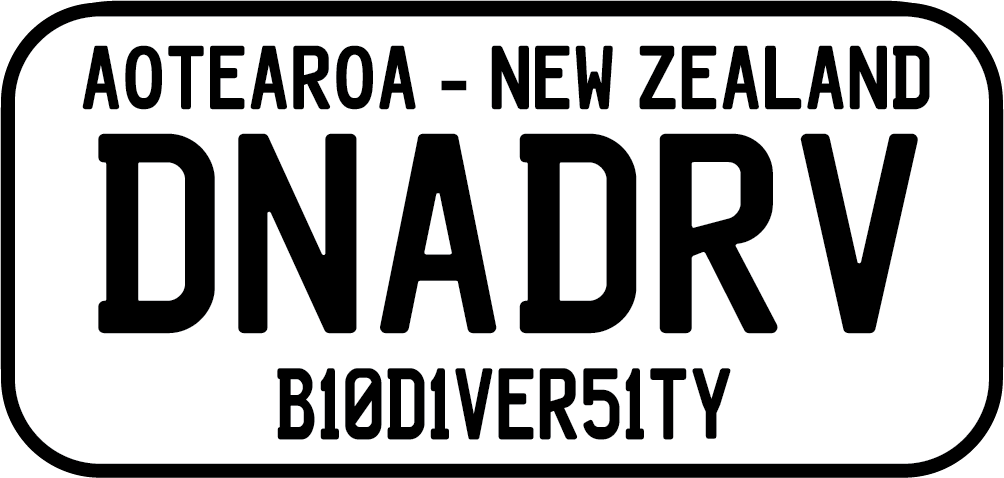
17 Nov 2025
The UoA Computer Science department invite staff from various faculties to propose a capstone project, typically one that aligns with a current project, for their final year students. Naturally, we put DNADRV into the mix. A huge congrats to the Bugs Free team for successfully delivering on what we believe data entry and accessibility should be like. We look forward to incorporating this in DNADRV's future!

10 Nov 2025
"It’s not often we talk about bug guts or meet people interested in getting squashed flies and bug splatters through the mail, but Richard and Aimee want to know all about it..." You can listen to it on Spotify here.
3 Nov 2025
"Students, staff and parents have been driving around noting insects that collect on their number plates, then scraping them off and bringing them to school to be sent up to Auckland University for DNA analysis. A great opportunity to participate in a nationwide science activity that will help us understand our biodiversity in insect populations."

31 Oct 2025
Great to meet The Breeze Canterbury team in Akaroa this morning on Hilary & Fitzy's Caravan Tour. We are excited that some DNADRV sampling may be happening enroute back to Christchurch. Possibly some lake flies may be found on your number plate...

8 Oct 2025
Far from being just road grime, bug splatters on licence plates are unlocking clues about insect biodiversity in Aotearoa. University of Auckland geneticists Dr Aimee van der Reis and Dr Richard O’Rorke chat to science communicator Ceana Priest about DNADRV—a citizen science project demonstrating how simple car rides can lead to scientific discoveries. Read more on the NZASE website.

24 Sep 2025
Producer Matthew Hutch tells about DNA Drive, a project which needs insects from your car number plate... You can read more about it here.
22 Sep 2025
Ever noticed how your number plate turns into a bug graveyard after a road trip? Turns out those splats might be more than science. Might be more science than splatter, rather. And they could be the key to solving a much bigger mystery...
19 Sep 2025
What if the insects that end up splattered on your car could actually help scientists study climate change? Dr Richard O'Rorke and Dr Aimee van der Reis join Emile Donovan to explain.
18 Sep 2025
What if the insects you hit with your car could contribute to research on climate change? That’s the idea driving new research from University of Auckland scientists Dr Richard O’Rorke and Dr Aimee van der Reis. They are leading a large team of researchers from the University of Auckland’s School of Computational Science, Centre of Machine Learning for Social Good, School of Biological Sciences, and Ngā Ara Whetū – Centre for Climate, Biodiversity and Society.

16 Sep 2025
Auckland University has launched a new study using your car to better understand New Zealand's insect biodiversity called DNA Drive. Researchers will be asking thousands of people over the next year to record their road trips and take samples of any insect material from their license plates. Here's Isobel Prasad with more.
30 Aug 2025
"So many people are already here exploring Science, from hands-on exhibits to chatting with our incredible staff and students". DNADRV had a table to hand out kits and explain the project to the next generation of scientists!

28 June - 6 July 2025
The DNADRV (DNA Drive) project seeks to explore the insect biodiversity in Aotearoa-NZ by swabbing any DNA traces that remain after insects collide with car license plates. Come pop by our table to hear about the project, what we have discovered so far, and collect a kit to sample on your next journey!

12 Apr 2025
"From those that dwell in the depths to those that take to the sky at night & flock to light… come learn about our lesser-known and often misunderstood critters!
Sustainable HB is thrilled to bring you an evening of Insect Intrigue on April 12th in Waimārama (Hawke's Bay)! As the sun sets, grab a bite from our BBQ sausage sizzle and get ready for an evening of fascinating insect discoveries with expert guests: Richard O’Rorke (UoA, DNADRV citizen science project) – Learn how you and your car could contribute to a nationwide environmental DNA project tracking insects and their habitats..."

10 Mar 2024
The first public engagement event for DNADRV and where it all began... Our first trial run was in March 2024, where we collaborated with the Auckland Vintage and Veteran Car Club. We cleaned and swabbed 19 of their car number plates before an ~2hr rally around south Auckland, and we swabbed the plates again when they finished driving. The most abundant of these was fungus gnats (50%), striped dung flies (14.7%), and coddling moths (9.3%). Other insects indentified included soldier flies and rove beetles. As predicted, because cars drove the same route the insect assemblage was largely coherent.
